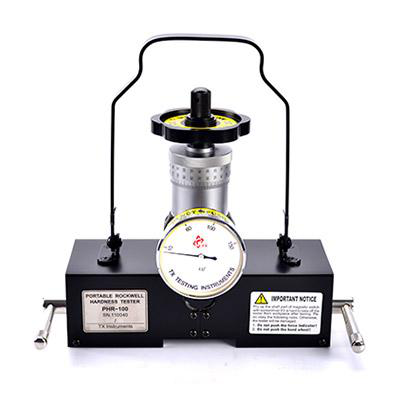Webster Hardness Testing for Aluminum and Aluminum Alloy
The Webster hardness testing for aluminum alloy material is applied the most in aluminum alloy section factories and aluminum alloy doors, windows and walls in the constructional industry. It is stipulated in the national standard GB/T 5237 that use the Webster Hardness Tester to test the hardness of aluminum alloy constructional profiles. In the construction industry standard JJG 139-2001 Glass Curtain Wall Installation Quality Inspection Methods, it is stipulated that use Webster Hardness Tester on site to test the hardness of aluminum profiles which used in the curtain wall project. The acceptance hardness value is more than 8HW(which is equivalent to 52HBS). Besides, the Webster Hardness Tester could also be applied in testing aluminum alloy plates and pipes.
The suitable range for testing of alloy is from 1××× to 7×××. The suitable hardness testing range is equivalent to Rockwell hardness value from 42 to 98HRE, and Brinell hardness value from 42 to 120HBS. The Webster Hardness Tester has small size, light weight, and is easy to operate. It causes no damage to specimen, especially suitable for testing hardness of aluminum alloy.

- Test Principle, Computational Formula
The basic principle of the Webster Hardness Tester is that press a certain shape chilled indenter into the surface of specimen under the action of a standard spring test force. It is defined that every 0.01mm indentation depth is one Webster hardness unit. The hardness of material and the indentation depth are in inverse proportion. The smaller the indentation depth is, the higher the hardness value is, while the bigger the indentation depth is, the smaller the hardness value is.
Computational Formula:
HW=20-L/0.01
In the formula:
HW— The Webster hardness symbol
L— Extension length of the indenter, that is the indentation depth pressed into the specimen /mm
0.01—— Defined value/mm
Indication of hardness value: If the indentation depth of indenter is 0.05mm, the dial head will point at 15 scale. It is indicated that HW=20-5=15 unit hardness value. Write it before hardness symbol, that is 15HW.
- Testing Instrument
So far, the Webster Hardness Tester for aluminum alloy has three models: W-20, W-20a and W-20b. The testers used the most in Chinese industries are W-20 series Webster Hardness Testers which are manufactured by Shenyang Tianxing Company. Shenyang Tianxing has been manufacturing Webster Hardness Tester for 20 years. The product quality and test accuracy have all been up to the international advanced level. So far, the national standard for Webster hardness test which Shenyang Tianxing participated in drafting is going to be carried out.W-20 is a general type suitable for testing aluminum alloy material whose thickness is from 0.8 to 6.0mm, especially suitable for testing aluminum alloy profiles.
W-20a can be used for testing aluminum alloy material whose thickness is from 6.0 to 13mm.
W-20b is designed specialized for thin tubes. It can be applied in testing hardness of aluminum alloy tubes with diameter more than 5.0mm.
- Specimen
The testing surface of specimen should be smooth and clean, without any mechanical damage or burr on the edge. Any coating on the testing surface should be cleared away thoroughly, and any slight scratching should be polished lightly.
The smallest size of specimen is about 25mm×25mm. When testing, the distance from indentation to edge should be assured no less than 3mm.